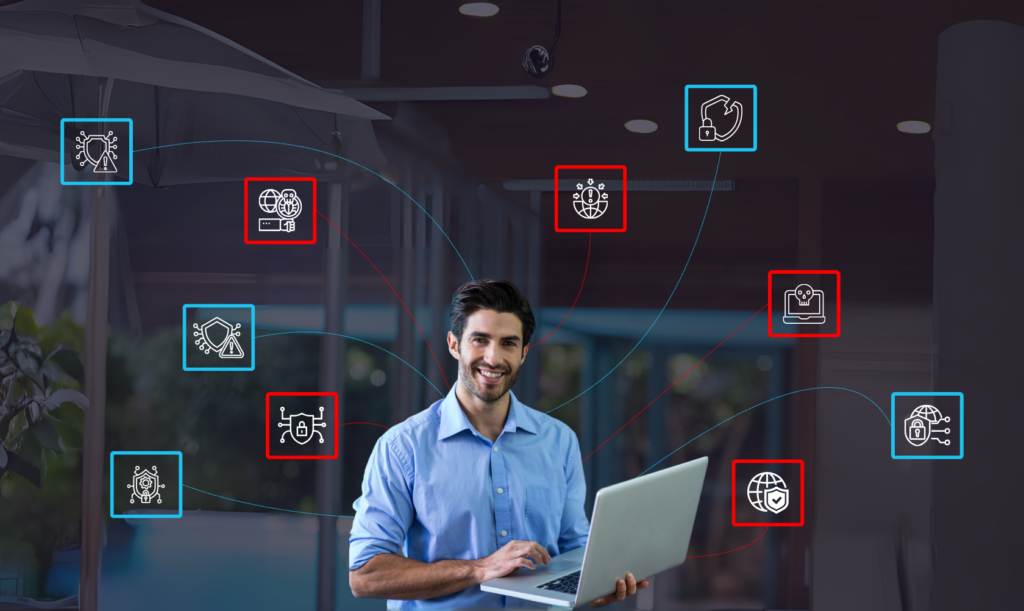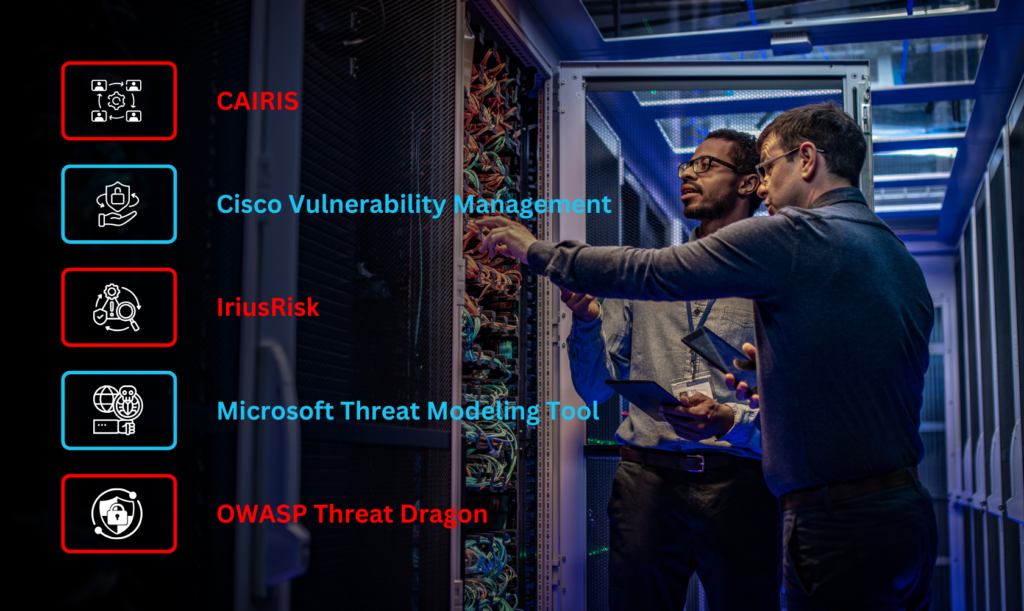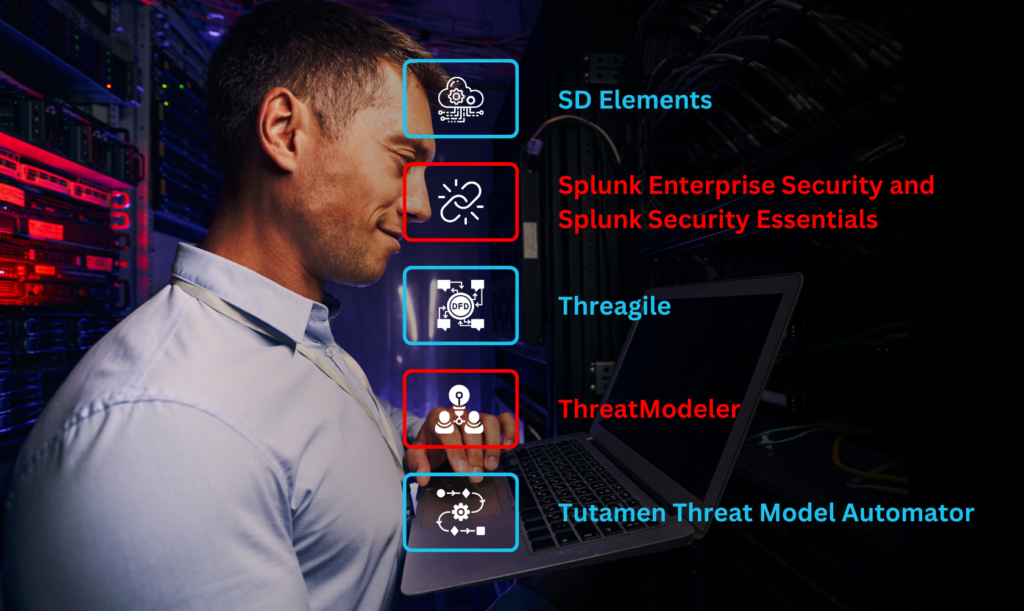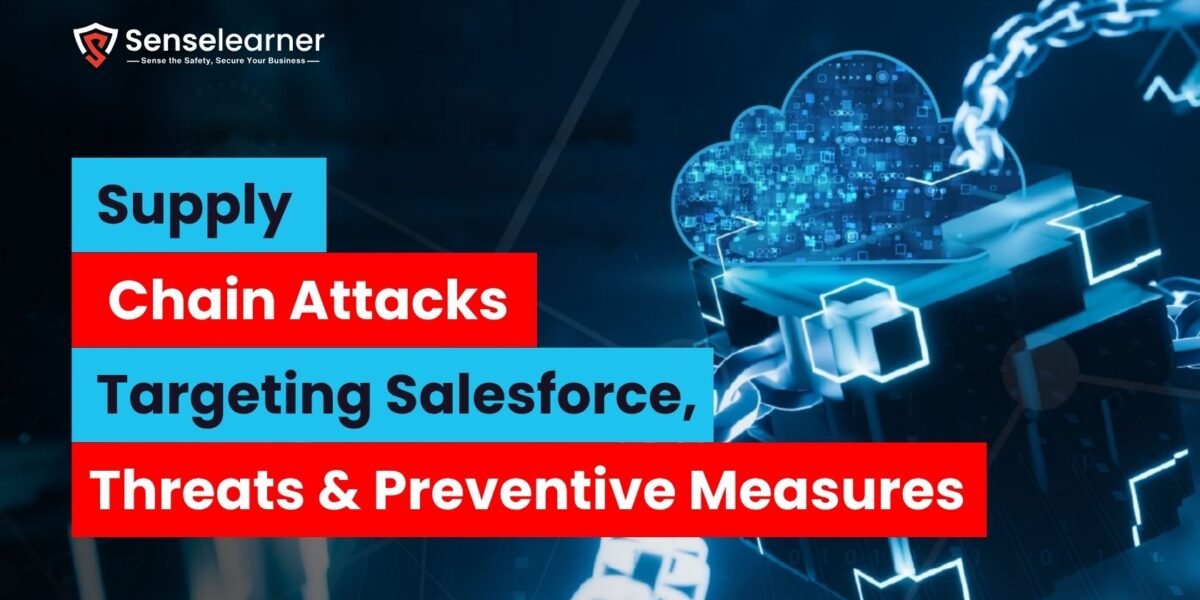Introduction

Top10 threat modeling tools: Threat modeling is an important repetition in cybersecurity that allows administrations to proactively classify and alleviate possible safety threats. By scientifically assessing the security carriage of structures and submissions, threat modeling supports in indulgent and addressing possible threats beforehand they can be abused. In this article, we will discover Top 10 Ideas for Enhancing Threat Modeling. From best applies and progress techniques to utensils and case studies, this leader aims to deliver visions into enhancing threat modeling procedures to reinforce overall cybersecurity pliability.
Introduction to Threat Modeling
Threat modeling is an organized method that aims to classify and arrange possible threats and vulnerabilities in software applications. It includes classifying possible attackers, their incentives, and the approaches they might use to exploit vulnerabilities in a system. The aim is to classify possible security risk early in (SDLC) software development life cycle. So they can be spoken before software is organized. Threat modeling approaches create artifacts counting
- A concept of the system
- Outlines of possible attackers, counting their goals and approaches
- A Catalog of risk that could ascend
Here are Top 10 threat modeling Tools

CAIRIS
CAIRIS is an open-source threat modeling tool that assimilates with numerous growth workflows, letting teams to integrate threat modeling into their current procedures. It supports automatic threat modeling, which can be flawlessly assimilated into growth pipelines. It a complete open source threat modeling tool that launched in 2012.
| Category | Details |
|---|---|
| System | Web-based tool compatible with Linux, Windows, Mac, and Ubuntu. Also functions as a Docker container. |
| Features | Creates attacker identities to profile potential threat actors. Provides 12 system perspectives covering both threat and architectural viewpoints. Identifies attack patterns and offers insights into attack justifications. |
| Performance | Highly efficient, though some users report slow system information input. |
| Support | Tutorials, demos, and online certification available. |
| Pricing | Free |
2. Cisco Vulnerability Management
Cisco Vulnerability Management assimilates with numerous security tools and systems, counting threat intelligence feeds, ticketing systems and vulnerability scanners. This incorporation allows administrations to integrate prioritize risks based on real-time threat intelligence, streamline remediation efforts and vulnerability data.
| Category | Details |
|---|---|
| System | SaaS tool available in two plans: Premier and Advantage. |
| Features | Analyzes data to generate real-time threat intelligence and provides recommended actions based on risk assessment. |
| Performance | Uses a proprietary algorithm for control, collects data from over 19 threat intelligence feeds, requires extensive data entry, and offers various reports. |
| Support | Basic and extended support available. |
| Pricing | Payment based on usage. |
IriusRisk
IriusRisk assimilates flawlessly with numerous growth workflows, letting teams to integrate threat modeling into their current procedures. IriusRisk does threat examines and makes threat models of a software request during the design stage.
| Category | Details |
|---|---|
| System | Available as both SaaS and on-premises deployment. |
| Features | Uses a questionnaire to collect data and generates a threat list via a rules engine. Integrates with tools like Azure DevOps Services and Jira. Supports file imports from Microsoft Threat Modeling Tool. |
| Performance | User-friendly and easy to navigate. |
| Support | Assistance provided through a trouble ticket system and email. |
| Pricing | Free Community version available; license-based enterprise pricing options. |
Microsoft Threat Modeling Tool
(TMT) Microsoft Threat Modeling Tool assimilates with numerous growth atmospheres, letting users to make threat models by (DFDs) Data Flow Diagrams to signify requests and perform threat modeling.
| Category | Details |
|---|---|
| System | Windows-based application for laptops and desktops. |
| Features | Creates threat models using Data Flow Diagrams (DFDs). Supports systems running on Windows and Microsoft Azure cloud services. Generates various reports. |
| Performance | Provides a cost-effective starting point for launching a threat modeling initiative. |
| Support | Support available through Microsoft, documentation, and user forums. |
| Pricing | Free |
5. OWASP Threat Dragon
OWASP Threat Dragon is a free, open-source threat modeling tool that assimilates with numerous growth tools and procedures. It stocks threat models close to the final code, letting designers to reflect security threats when making new features or informing current ones. Presently, Threat Dragon assimilates with GitHub, with plans to support other storing choices in the future.
| Category | Details |
|---|---|
| System | Web-based application. |
| Features | Generates Data Flow Diagrams (DFDs) that integrate with a rules engine to produce threat lists, references, and reports. Supports STRIDE (spoofing, tampering, repudiation, information disclosure, denial of service, elevation of privilege) and LINDDUN (linking, identifying, nonrepudiation, detecting, data disclosure, unawareness, and noncompliance) models. |
| Performance | User-friendly with a variety of features. |
| Support | Certification available, along with an active user community for troubleshooting. |
| Pricing | Free |

SD Elements
SD Elements from Security Scope offers a smooth conversion of policy into process through a variation of threat modeling structures and capitals that automates the identification of threats and countermeasures.
| Category | Details |
|---|---|
| System | Available as SaaS or on-premises deployment. |
| Features | Uses assessments to gather data, identify vulnerabilities, and provide justifications. Offers extensive reporting and analysis capabilities. |
| Performance | Highly efficient once the initial learning curve is overcome. |
| Support | Provided by Security Compass, covering all project stages, including setup, training, and implementation. |
| Pricing | Usage-based pricing with three options: Express, Expert, and Enterprise. |
Splunk Enterprise Security and Splunk Security Essentials
Splunk Enterprise Security usages a broad array of utensils and capitals, counting AI and machine learning, to deliver a risk-based valuation of an administration’s technology architecture. It collects performance data through an association, analyses it from multiple viewpoints, and classifies and visualizes potential threats and vulnerabilities. Splunk Security Basics is the vendor’s free tool that offers limited features reports and dashboards.
| Category | Details |
|---|---|
| System | Splunk Enterprise Security available as SaaS or on-premises. Splunk Security Fundamentals can be downloaded from Splunkbase. |
| Features | Provides continuous monitoring, root cause analysis, malware detection, and risk-based alerts. Mapped to the Kill Chain and MITRE ATT&CK frameworks. |
| Performance | User-friendly interface with intuitive dashboards. |
| Support | Offers knowledge resources, support services, on-site training, video tutorials, and access to Splunk University. |
| Pricing | Splunk Enterprise Security requires a license with workload-, entity-, and ingest-based pricing. Splunk Security Fundamentals is free. |
Threagile
Threagile is an open-source threat modeling tool that assimilates with numerous growth utensils and stages, create it easy to integrate threat modeling into DevSecOps pipelines. Threagile is an open source, code-based threat modeling toolkit that purposes in agile atmospheres.
| Category | Details |
|---|---|
| System | Integrated development environment (IDE)-based tool that models threats by assessing assets using a YAML file as input. |
| Features | Generates threat models as Data Flow Diagrams (DFDs) and provides comprehensive reports. |
| Performance | Efficient and enables easy threat modeling. |
| Support | Certification available, along with an active user community for troubleshooting. |
| Pricing | Free |
Threat Modeler
Threat Modeler is an automatic threat modeling tool for DevOps. It has three editions: Cloud Appsec and Community.
| Category | Details |
|---|---|
| System | Web-based tool designed for large organizations with complex technology infrastructures. |
| Features | Uses the VAST (Visual, Agile, and Simple Threat) model. Includes integrated workflow approval, a reporting engine, and an intelligent threat engine. Supports multiple systems and integrates natively with Jenkins and Jira. |
| Performance | Easy to navigate across various functions. |
| Support | Multiple support options available through Threat Modeler. |
| Pricing | Community version is free; Cloud editions and AppSec versions require a license. |
Tutamen Threat Model Automator
Tutamen Threat Model Automator from Tutamantic helps security growth at the architectural and design phases. The company is presently emerging the tool.
| Category | Details |
|---|---|
| System | Cloud-based platform. |
| Features | Accepts inputs from established applications like Excel and Visio. Offers a variety of reports and is highly flexible. |
| Performance | Currently in beta release. |
| Support | Technical support available through Tutamantic. |
| Pricing | Free for users in the beta program. |
Explore More: Best 10 VAPT Tools for Effective Cybersecurity Testing
FAQs
How do I choose the best threat modeling tool for my organization?
Choosing the best threat modeling tool depends on your organization’s specific needs. Consider factors such as the complexity of your system, the expertise of your team, integration with existing tools, budget, and specific features required. Conducting a pilot test with a few tools can also help determine which one fits best with your workflow.
Are there any free threat modeling tools available?
Yes, several free threat modeling tools are available. Some popular options include OWASP Threat Dragon and Microsoft Threat Modeling Tool which we have mentioned above in the article. These tools offer essential features and functionalities that can be a great starting point for organizations with budget constraints.
How frequently should threat modeling be performed?
Threat modeling should be an on-going process rather than a one-time activity. It is recommended to perform threat modeling at various stages of the software development lifecycle, such as during the design phase, after significant changes to the system, and periodically during regular security reviews. This helps in continuously identifying and mitigating emerging threats.
Can threat modeling tools be used for both web and mobile applications?
Yes, many threat modeling tools are versatile and can be used for both web and mobile applications. These tools often provide templates and frameworks specifically designed to address the unique security challenges of different platforms. Ensure the tool you choose supports the specific types of applications you are developing



